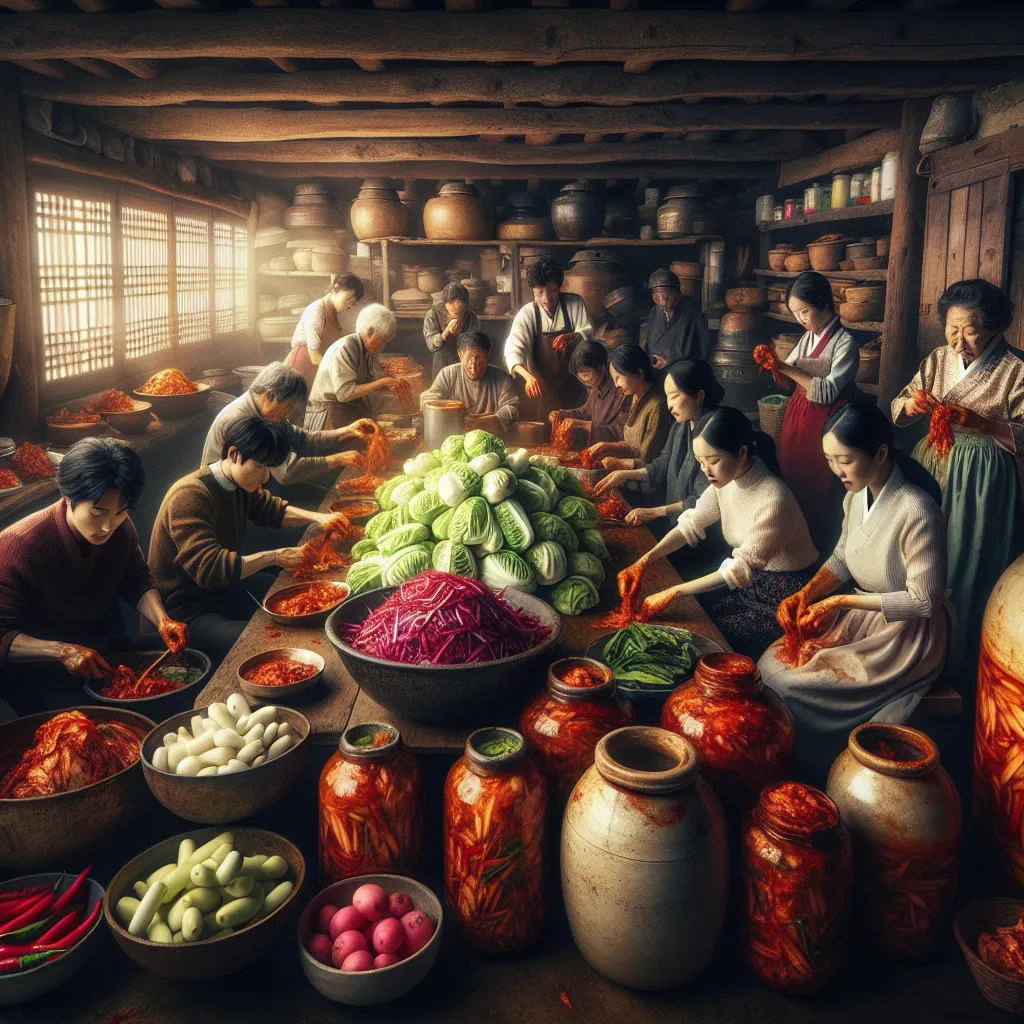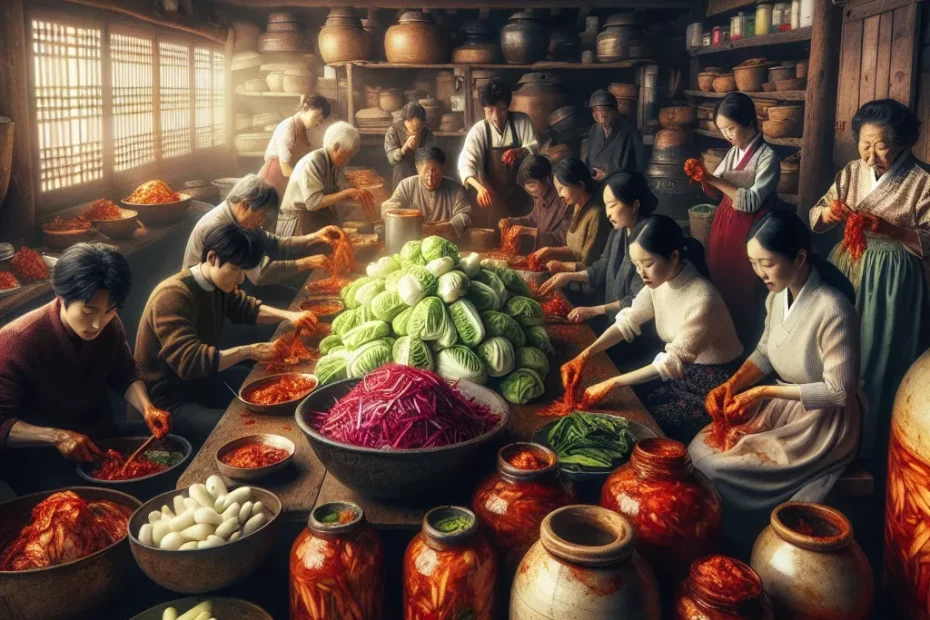As you delve into the world of Korean cuisine, there is one iconic dish that stands out above the rest – kimchi. This traditional fermented dish holds a rich history and cultural significance that has been passed down through generations. Exploring the secrets behind the making of kimchi not only unveils a culinary art form but also provides a deeper understanding of Korean heritage. In this blog post, we will embark on a journey to uncover the hidden gems of kimchi-making, from its historical roots to the essential ingredients and step-by-step guide for crafting this beloved delicacy at home. Join us as we unravel the mysteries behind Korea’s signature fermented dish and discover the key to perfecting its unique taste.

Unveiling the History of Kimchi
Embark on a journey through time as we delve into the rich history of Korea’s beloved dish, Kimchi. Dating back over 2,000 years, Kimchi has been a staple in Korean cuisine and a symbol of the country’s cultural identity. This iconic fermented dish is not just a side dish but a representation of Korea’s resilience, creativity, and resourcefulness.
The Origins of Kimchi
The origins of Kimchi can be traced back to the Three Kingdoms period, where early forms of fermented vegetables were consumed for their health benefits and as a way to preserve food during harsh winters. Over the centuries, Kimchi evolved into the dish we know today, with various regional variations and ingredients.
Evolution of Kimchi
During the Joseon Dynasty, Kimchi became more standardized, with the introduction of chili peppers from the New World adding a spicy kick to the traditional recipe. This transformation not only enhanced the flavor of Kimchi but also increased its nutritional value, thanks to the antibacterial properties of chili peppers.
Modern Popularity and Health Benefits
In modern times, Kimchi has gained global popularity not only for its unique taste but also for its numerous health benefits. Packed with vitamins A, B, and C, as well as healthy bacteria from the fermentation process, Kimchi is known to boost the immune system, aid digestion, and promote overall well-being.
Cultural Significance
The cultural significance of Kimchi extends beyond its culinary appeal. It is a dish that brings families together, with the tradition of making Kimchi passed down from generation to generation. In fact, Kimjang, the annual Kimchi-making event in Korea, was designated as a UNESCO Intangible Cultural Heritage in 2013, highlighting the importance of Kimchi in Korean society.
As we unravel the history of Kimchi, we uncover not just a fermented dish but a symbol of Korean heritage, tradition, and innovation. So, the next time you savor a bite of Kimchi, remember that you are tasting a piece of history that has stood the test of time and continues to captivate taste buds around the world. 🥢🌶️🇰🇷
The Essential Ingredients for Authentic Kimchi
In the realm of traditional Korean cuisine, kimchi stands as a revered dish that embodies the essence of fermentation and flavor. To create an authentic batch of this iconic dish, one must pay meticulous attention to the selection and preparation of key ingredients. Let us delve into the essential components that contribute to the distinctive taste and aroma of genuine kimchi!
Napa Cabbage
At the heart of any kimchi recipe lies the humble yet crucial napa cabbage. This cabbage variety, with its crisp texture and ability to absorb the flavors of the seasoning, serves as the primary vehicle for the fermentation process. The quality of napa cabbage directly impacts the final outcome of the kimchi, making it a non-negotiable element in the recipe.
Korean Sea Salt
The use of Korean sea salt is paramount in kimchi-making, as it not only enhances the taste but also plays a vital role in the fermentation process. The salt helps to draw out moisture from the cabbage, creating the ideal environment for the growth of beneficial bacteria. This natural salt is rich in minerals, adding depth and complexity to the kimchi’s flavor profile.
Gochugaru (Korean Red Pepper Flakes)
Gochugaru, or Korean red pepper flakes, is responsible for infusing kimchi with its signature spiciness and vibrant red hue. These flakes are sun-dried and coarsely ground, offering a distinct smoky flavor and moderate heat to the dish. The quantity of gochugaru used can be adjusted according to personal preference, allowing for a customized level of spiciness.
Garlic and Ginger
The dynamic duo of garlic and ginger brings a pungent and aromatic quality to kimchi, elevating its overall taste profile. Garlic adds a robust umami flavor, while ginger contributes a subtle warmth and freshness. These two ingredients work in harmony to enhance the complexity of flavors in the fermented dish.
Radish and Scallions
Radish and scallions provide a crunchy texture and a mild sweetness to kimchi. Radish, in particular, adds a refreshing contrast to the cabbage, while scallions offer a hint of oniony flavor. These vegetables not only contribute to the overall taste but also enhance the visual appeal of the finished kimchi.
Sweet Rice Flour
Sweet rice flour, when mixed with water, creates a porridge-like paste that serves as a natural thickener for the kimchi seasoning. This paste helps to adhere the seasonings to the vegetables, ensuring a well-coated and flavorful final product. Additionally, the sweet rice flour acts as a source of nourishment for the fermentation process.
In conclusion, the art of kimchi-making hinges on the harmonious combination of these essential ingredients, each playing a vital role in shaping the final product. By honoring tradition and embracing the nuances of fermentation, one can unlock the secrets to creating authentic and delectable kimchi that pays homage to Korea’s rich culinary heritage!
Step-by-Step Guide to Making Kimchi at Home
Are you ready to dive into the world of kimchi-making? This step-by-step guide will take you through the process of creating Korea’s beloved fermented dish right in the comfort of your own kitchen! 🥢🌶️
1. Gather Your Ingredients
To start your kimchi-making journey, you will need Napa cabbage, Korean radish, garlic, ginger, Korean red pepper flakes (gochugaru), fish sauce, salt, and sugar. Make sure to use high-quality ingredients for the best results!
2. Prepare the Vegetables
Begin by cutting the Napa cabbage into quarters, then soak them in a saltwater brine for a few hours. Meanwhile, julienne the Korean radish, mince the garlic and ginger, and mix them with the red pepper flakes, fish sauce, salt, and sugar to create the kimchi paste.
3. Stuff the Cabbage
After rinsing the cabbage quarters, generously coat each leaf with the kimchi paste, making sure to get in between the layers for maximum flavor. Don’t be afraid to get your hands dirty – it’s all part of the kimchi-making fun! 🥬👐
4. Fermentation Time
Place the kimchi-stuffed cabbage into a clean glass jar, pressing down firmly to remove any air bubbles. Leave some space at the top of the jar to allow for fermentation gases. Seal the jar and let it ferment at room temperature for 1-2 days before transferring it to the refrigerator.
5. Enjoy Your Homemade Kimchi
After a few days of fermentation, your homemade kimchi will be ready to enjoy! Serve it as a side dish, add it to stews and fried rice, or simply enjoy it on its own. The possibilities are endless when it comes to incorporating kimchi into your meals! 🍚🌟
Making kimchi at home is not only a rewarding experience but also a delicious way to explore Korean cuisine. So roll up your sleeves, follow this guide, and get ready to impress your taste buds with your very own homemade kimchi masterpiece! 🇰🇷🥢
Tips and Tricks for Perfecting Your Kimchi-Taste
Welcome to the world of kimchi-making, where the secrets of Korea’s signature fermented dish unfold before your eyes! As you embark on this culinary journey, it’s essential to understand the tips and tricks that will elevate your kimchi to the next level.
The Importance of Quality Ingredients
First and foremost, the key to perfecting your kimchi-taste lies in the quality of ingredients you use. Opt for the freshest Napa cabbage, vibrant red chili flakes, and pungent garlic to create a harmonious flavor profile that will tantalize your taste buds. Remember, kimchi is all about balance, so don’t be afraid to experiment with different ratios of ingredients until you find the perfect combination.
Temperature and Fermentation Time
Temperature and fermentation time are crucial factors in achieving that quintessential kimchi flavor. Fermenting your kimchi at a consistent temperature between 55-65°F (13-18°C) will allow the flavors to develop slowly and intensify over time. The ideal fermentation period can vary depending on your preferences, but a general rule of thumb is to let your kimchi sit for at least 3-5 days before refrigerating.
Enhancing Flavor Complexity
To add an extra layer of complexity to your kimchi, consider incorporating additional ingredients such as fish sauce, shrimp paste, or pear puree. These umami-rich additions will enhance the depth of flavor in your kimchi and take it to new heights. Don’t be afraid to get creative and customize your kimchi to suit your personal taste preferences.
Proper Storage Techniques
When it comes to storing your kimchi, airtight containers are your best friend. Properly sealed containers will prevent unwanted odors from permeating your kimchi and ensure that it stays fresh for longer. Remember to burp your containers regularly to release excess gas produced during fermentation and maintain the quality of your kimchi.
In conclusion, mastering the art of kimchi-making requires patience, attention to detail, and a willingness to experiment. By following these tips and tricks, you’ll be well on your way to creating kimchi that is bursting with flavor and complexity. So roll up your sleeves, gather your ingredients, and let the magic of fermentation transform your kitchen into a kimchi paradise! 🥢🌶️🥬
As you delve into the rich history and essential ingredients of kimchi, you begin to appreciate the intricate process behind this beloved Korean dish. With a step-by-step guide at your disposal, you are now equipped to create your own authentic kimchi at home. Remember, the key to perfecting your kimchi lies in experimentation and patience. By incorporating these tips and tricks into your practice, you can elevate the taste of your kimchi to new heights. Embrace the tradition, savor the flavors, and embark on a culinary journey that celebrates the art of fermentation.
